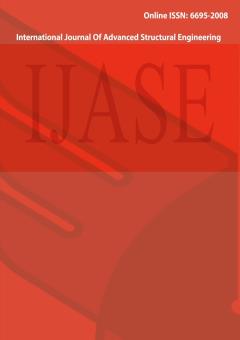The effect of different arrangements of longitudinal reinforcements on the capacity of wide concrete beams
Subject Areas : Structural Mechanics
Javad Mahdian pari
1
,
alireza faroughi
2
![]()
1 - Ph.D. Candidate, Department of civil engineering, West Tehran branch, Islamic Azad University, Tehran, Iran
2 - Assistant Professor, Department of civil engineering, East Tehran branch, Islamic Azad University, Tehran, Iran
Keywords: Concrete Structure, wide Beam, Ductility, Reinforcement Arrangement, Finite Element Method.,
Abstract :
A beam that has a width greater than the width of the column connected to it is called a wide beam. Due to the reduction in the height of the beams in this type of system, many advantages are created, including reducing the costs of molding and construction, increasing the execution speed, reducing the height of the floor and of course increasing the number of floors in high-rise buildings, as well as including Other advantages of these beams from the architectural point of view are the hiding of the beams in the roof of the structure. In concrete structure design, ductility is one of the important parameters. The ductile behavior of the structure has a significant effect in reducing the design forces caused by the earthquake due to its energy absorption and loss. The role of reinforcement in the ductility of concrete is very important. In this article, a concrete beam with six different types of longitudinal rebar arrangement has been selected for study and four-point loading has been applied to the models. All models have been analyzed in ABAQUS finite element software. The results indicate that; The pattern of placing the rebar crosswise and diagonally has less hardness, ductility and resistance than other models. The highest amount of energy absorption was related to the model with six bars in a trapezoidal arrangement.


